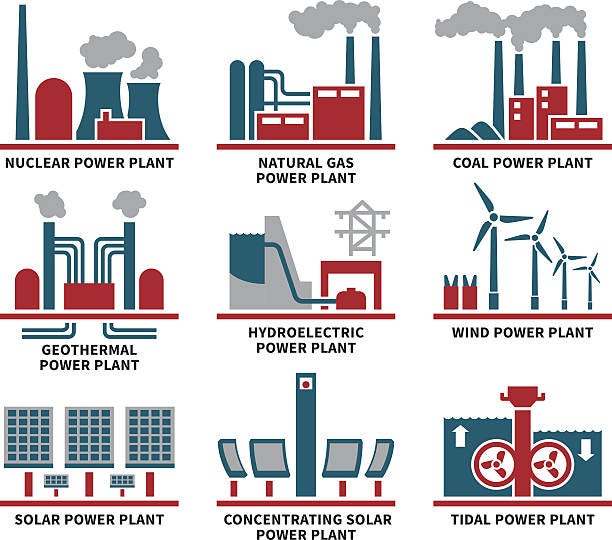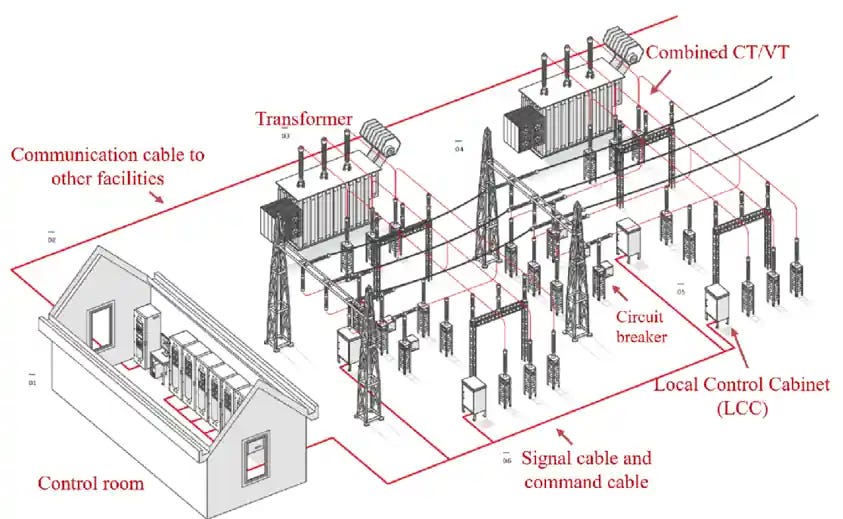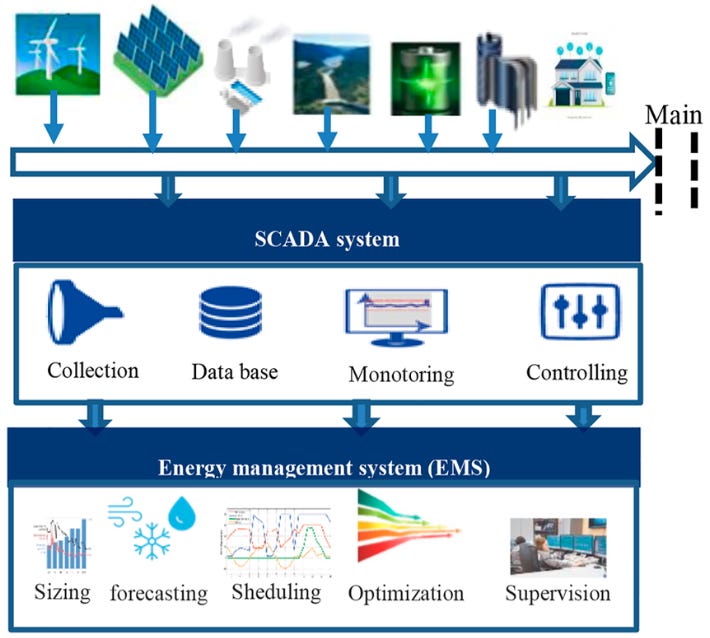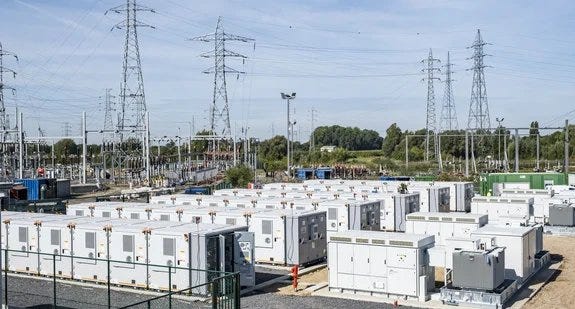Understanding the Electricity Grid: How It Works, Its Key Components, and Its Biggest Vulnerabilities
Let’s dive into the electricity grid, a marvel of modern engineering that powers our homes, businesses, and lives.
Whether you’re curious about how electricity gets from a power plant to your phone charger or what keeps grid operators up at night, this post will break it all down.
We’ll explore what the grid is, its major components, and the most significant risks threatening grids worldwide.
What Is the Electricity Grid?
The electricity grid is a vast, interconnected network that delivers electricity from where it’s generated to where it’s used.
Think of it as the circulatory system of modern society, pumping energy to keep everything running.
It’s not just a single system but a complex web of infrastructure, technologies, and operators working together to ensure the lights stay on.
At its core, the grid balances supply and demand in real time, ensuring electricity is available when and where it’s needed.
It spans power plants, transmission lines, substations, and distribution networks, all coordinated to deliver reliable power.
But to understand how it works, let’s break down its major components.
Major Parts and Components of the Electricity Grid
The grid can be divided into three main stages: generation, transmission, and distribution, with additional systems for control and reliability.
Here’s a closer look at each:
Generation: Where Electricity Is Born
Power plants generate electricity using various sources: coal, natural gas, nuclear, hydro, wind, solar, and more.
These facilities convert energy (e.g., heat, motion, or light) into electrical energy. For example, a wind turbine turns kinetic energy from wind into electricity, while a coal plant burns fuel to produce steam that drives turbines.
Fun fact: In 2023, about 40% of global electricity came from renewable sources like hydro, wind, and solar, a trend that’s growing rapidly.
Transmission: The Energy Superhighway
High-voltage transmission lines carry electricity over long distances, often hundreds of miles, from power plants to population centers.
These lines operate at high voltages (typically 100 kV to 765 kV) to minimize energy loss over distance.
Substations with transformers step up voltage for efficient long-distance travel and step it down for local use.
Transmission systems are often interconnected across regions or even countries, forming a backbone that ensures redundancy and stability.
Distribution: Delivering Power to You
The distribution system takes electricity from transmission lines and delivers it to homes, businesses, and industries.
Local substations reduce voltage to safer levels (e.g., 120V in the U.S. or 230V in Europe) for consumer use.
Distribution lines, often seen on utility poles or underground, form the final link in the chain.
This stage includes meters, circuit breakers, and other equipment to manage and monitor power delivery.
Control Systems: The Brain of the Grid
Grid operators use sophisticated control centers to monitor and manage the flow of electricity.
Supervisory Control and Data Acquisition (SCADA) systems and Energy Management Systems (EMS) help balance supply and demand, detect faults, and prevent outages.
Smart grid technologies, like sensors and automated switches, are modernizing grids, improving efficiency and resilience.
Storage and Ancillary Systems: The Backup Plan
Energy storage systems (e.g., batteries, pumped hydro) store excess electricity for use during peak demand or outages.
Ancillary services, like frequency regulation and voltage control, keep the grid stable by ensuring electricity flows at the right frequency (e.g., 60 Hz in the U.S., 50 Hz in Europe).
Together, these components form a dynamic system that adapts to changing conditions, like a sudden spike in demand during a heatwave or a drop in wind power on a calm day.
The Most Risky Weaknesses of Electricity Grids Worldwide
While the grid is a remarkable feat, it’s not invincible.
Grids around the world face vulnerabilities that can lead to outages, economic losses, or even widespread disruption. Here are the most critical risks:
Aging Infrastructure
Many grids, especially in developed countries, rely on equipment that’s decades old. In the U.S., for example, much of the grid was built in the mid-20th century, and components like transformers and substations are nearing the end of their lifespan.
Aging infrastructure is less reliable, harder to maintain, and often incompatible with modern technologies like renewable energy integration.
Risk: Unexpected failures can cause outages, and replacing old equipment is costly and time-consuming.
Extreme Weather and Climate Change
Storms, hurricanes, wildfires, and heatwaves are becoming more frequent and severe due to climate change, putting immense stress on grids.
For example, Hurricane Ida in 2021 knocked out power to over 1 million customers in Louisiana, and wildfires in California have repeatedly damaged transmission lines.
Risk: Physical damage to lines, poles, and substations can lead to prolonged outages, while extreme heat reduces the efficiency of power lines and increases demand for cooling.
Cybersecurity Threats
Modern grids rely heavily on digital control systems, making them targets for cyberattacks. Hackers can disrupt operations, steal data, or even shut down parts of the grid.
A notable example is the 2015 cyberattack on Ukraine’s grid, which left 230,000 people without power for hours.
Risk: As grids become “smarter” with IoT devices and automation, vulnerabilities multiply, and a successful attack could cause cascading failures.
Supply-Demand Imbalance
Electricity demand must match supply at all times, or the grid can become unstable. Sudden spikes (e.g., during heatwaves) or drops in supply (e.g., when wind or solar output falls) can strain the system.
The transition to renewables, while critical for sustainability, introduces variability since wind and solar depend on weather conditions.
Risk: Without sufficient storage or backup power, imbalances can lead to blackouts or brownouts.
Geopolitical and Supply Chain Risks
Grids rely on global supply chains for critical components like transformers, semiconductors, and rare earth metals for renewable energy systems.
Geopolitical tensions, trade disruptions, or shortages (like the 2021-2022 global chip shortage) can delay repairs or upgrades.
Risk: Supply chain bottlenecks can slow grid modernization and leave systems vulnerable to prolonged outages.
Human and Operational Risks
Human errors, inadequate maintenance, or poor planning can lead to failures. For instance, the 2003 Northeast U.S. blackout, affecting 55 million people, was triggered by a software bug and operator errors.
Underinvestment in grid resilience or workforce training exacerbates these issues.
Risk: Small mistakes can escalate into major outages, especially in complex, interconnected systems.
Why This Matters and What’s Being Done
The electricity grid is the backbone of modern life, powering everything from hospitals to data centers.
Disruptions can have cascading effects, costing billions and endangering lives.
For example, the 2021 Texas winter storm outages led to hundreds of deaths and $200 billion in damages, highlighting the stakes.
To address these weaknesses, governments, utilities, and innovators are taking action:
Upgrading Infrastructure: Investments in modernizing aging grids, like the U.S.’s $1 trillion infrastructure bill, aim to replace outdated equipment and integrate smart technologies.
Enhancing Resilience: Microgrids, energy storage, and distributed energy resources (like rooftop solar) reduce reliance on centralized systems and improve local reliability.
Strengthening Cybersecurity: New standards and technologies, like encryption and AI-based threat detection, are being deployed to protect grids.
Adapting to Renewables: Advanced forecasting, grid-scale batteries, and demand-response programs help manage the variability of wind and solar power.
Looking Ahead
The electricity grid is an unsung hero, quietly powering our world. But as demand grows, climate challenges intensify, and technology evolves, grids must adapt to stay reliable.
Understanding their components and vulnerabilities helps us appreciate the complexity of keeping the lights on, and the urgency of investing in their future.
What do you think about the grid’s challenges?
Are there solutions or innovations you’re excited about?
Drop a comment or share this post with someone who’d love to geek out about energy systems.












Show me a solar-powered solar panel plant and I’ll start believing in “renewables.”
Grid challenges are real, see the blackout recently in two countries, Spain and Portugal, seemingly connected to high temperatures and the use of renewables. I am all for renewables but the current grid was not created for those types of energy. Microgrids are a real opportunity and being implemented everywhere. One last tought: unfortunately renewables does not yet scratch the surface of replacing solid fuels used in heavy machines and transportation. Great article, thank you!